As rain drizzled down on an early Saturday morning at Florence Fang Community Garden (FFCF),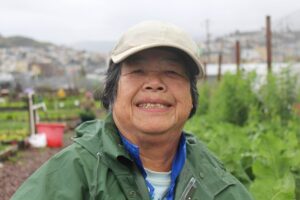 Ms. Chang finished loading up her cart with groceries and beckoned us over to view her most recent crop: a bountiful patch of cauliflower! Each plant boasted a still-growing cauliflower head, already larger than an outstretched hand.
Ms. Chang finished loading up her cart with groceries and beckoned us over to view her most recent crop: a bountiful patch of cauliflower! Each plant boasted a still-growing cauliflower head, already larger than an outstretched hand.
Ms. Chang is an eight-year volunteer and five-year food pantry participant at FFCF, a Food Bank partner and beautiful one-acre community center located in Bayview-Hunters Point. “It’s a really diverse space, with all kinds of people,” Ms. Chang told us. “I live in Hunters Point, so I walk here. My motivation to come out was that I’m retired, and now I have free time! This is an opportunity to find some joy, and it’s just really fun to socialize.”
Return of the Food Pantry
It’s not only social hour at the farm: Ms. Chang, along with around 15-20% of other farm volunteers, stops by FFCF’s Saturday morning food pantry before beginning her farm workday. Though it was forced 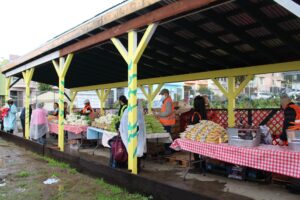 to close because of pandemic precautions, the pantry reopened with the support of the Food Bank back in February of 2023.
to close because of pandemic precautions, the pantry reopened with the support of the Food Bank back in February of 2023.
Now, FFCF provides pantry essentials and fresh produce each week to mainly Chinese elders. It’s a much-needed service, especially as high prices persist and safety net programs are rolled back – because neighbors like Ms. Chang and her eldest daughter, whom she lives with, are already feeling the impacts.
Ms. Chang shared her experience: “I have CalFresh, it helps me with getting groceries. It was definitely easier during the pandemic with their extra funding [emergency allotments]. But it barely holds me over now. I cope by just not buying as much – I have retirement (SSI) too, so I’m not completely depleted. It does feel like not enough sometimes, though.”
Saturday (Farm)er’s Market
Neighborhood pantries like FFCF help fill the gap with fresh, healthy food for thousands of neighbors across San Francisco and Marin who are facing similar difficulties. On the Saturday we visited, volunteers laid out items like rice, bok choy, beets, carrots and celery farmer’s market-style, so each participant could take or decline items as they wished.
across San Francisco and Marin who are facing similar difficulties. On the Saturday we visited, volunteers laid out items like rice, bok choy, beets, carrots and celery farmer’s market-style, so each participant could take or decline items as they wished.
“It’s great to see all of the offerings and get to choose what I want to bring home. I tend to like everything, though,” Ms. Chang told us. “With today’s offerings, I’d throw together the carrots, celery, bok choy, throw some sort of meat in and make a lovely soup. It is great for bringing down inflammation in the body!”
A Joyful Space
 Upon immigrating to San Francisco from Guangzhou, China in the 80s, Ms. Chang worked as a sewist in San Francisco Chinatown’s garment factories. Now retired, the farm offers a different, more enjoyable kind of work: “I get to do some work on the farm, grow green vegetables and romaine lettuce. I grow really big winter melons. It isn’t too strenuous, and we get to pick whatever jobs we want. Plus, I like the exercise!”
Upon immigrating to San Francisco from Guangzhou, China in the 80s, Ms. Chang worked as a sewist in San Francisco Chinatown’s garment factories. Now retired, the farm offers a different, more enjoyable kind of work: “I get to do some work on the farm, grow green vegetables and romaine lettuce. I grow really big winter melons. It isn’t too strenuous, and we get to pick whatever jobs we want. Plus, I like the exercise!”
As we talk, she helps another volunteer carry a basket of recent harvests up the hill, where they’ll be divided among the volunteers – “we all get to share our harvests with one another,” explained Ms. Chang. That’s not all they share, because food and fun go hand in hand at FFCF. Typically, Ms. Chang will volunteer with her two younger sisters, but her daughter and grandchildren also stop by occasionally: “There’s a lot of events and activities at the farm, and my family enjoys coming to these events. We throw parties, sing, dance, everything. You’ll have to come visit us when we put on talent shows!”
farm, and my family enjoys coming to these events. We throw parties, sing, dance, everything. You’ll have to come visit us when we put on talent shows!”
After marveling at the beauty and vibrancy of the farm and learning what Ms. Chang is planting for spring (tong ho and yao choy!), we finally wave goodbye. The rain has stopped, the sun is beginning to peek out, and Ms. Chang heads back to her fellow volunteers. From the smile on her face, it’s safe to say that FFCF has built not only a flourishing farm or food pantry, but a true community on this plot of land.
As Ms. Chang put it so succinctly: “I have a lot of friends here. Being here makes me happy.”


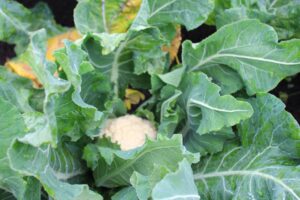


 Volunteering with the Food Bank in May 2020 was really a no-brainer for Mitchell. As a retired government worker for various public health agencies, he already had a deep knowledge of epidemics and health outbreaks. Combined with the driving force of his faith, Mitchell knew he wanted to help his community out during a difficult and pivotal time.
Volunteering with the Food Bank in May 2020 was really a no-brainer for Mitchell. As a retired government worker for various public health agencies, he already had a deep knowledge of epidemics and health outbreaks. Combined with the driving force of his faith, Mitchell knew he wanted to help his community out during a difficult and pivotal time.
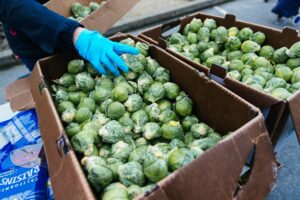 a pallet and put it on the table. And I will be 80 years old in July!”
a pallet and put it on the table. And I will be 80 years old in July!” way to ensure we can continue meeting the immediate needs of our neighbors while strategically planning for more long-term, holistic solutions in the future. Thank you, Mitchell, for your dedication to ending hunger in San Francisco and Marin! We can’t do this work without supporters like you.
way to ensure we can continue meeting the immediate needs of our neighbors while strategically planning for more long-term, holistic solutions in the future. Thank you, Mitchell, for your dedication to ending hunger in San Francisco and Marin! We can’t do this work without supporters like you.
 about his health and also wanted to make sure that he didn’t lose access to the pantry’s services if he was still in need of the food. That’s when I remembered that included in the handwritten card that his granddaughter had given me, was her mom’s contact info.
about his health and also wanted to make sure that he didn’t lose access to the pantry’s services if he was still in need of the food. That’s when I remembered that included in the handwritten card that his granddaughter had given me, was her mom’s contact info. 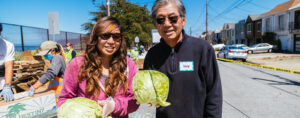
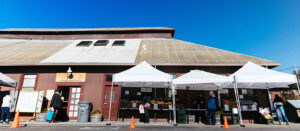 The town of Pt. Reyes Station itself is, by all accounts, pretty tiny. But the reach of local community hub and Food Bank partner
The town of Pt. Reyes Station itself is, by all accounts, pretty tiny. But the reach of local community hub and Food Bank partner 
 During the intense flooding back in December, “People were saying, ‘We have no power, we lost everything in the fridge,’” Alma shared. “Those days we were very busy, and we operated with no power. We had a generator, and we plugged in everything and continued [all our services]. People were so happy that we had food.”
During the intense flooding back in December, “People were saying, ‘We have no power, we lost everything in the fridge,’” Alma shared. “Those days we were very busy, and we operated with no power. We had a generator, and we plugged in everything and continued [all our services]. People were so happy that we had food.”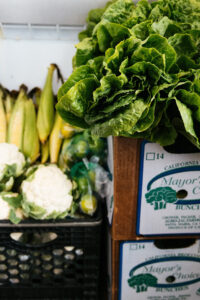 income families in West Marin with unexpected expenses,” shared Yareli Cervantes, Emergency Assistance Program Manager at WMCS. “Just by serving food, we’re able to really get to know people and identify their needs. It opens up the conversation for them to come seek out financial assistance.”
income families in West Marin with unexpected expenses,” shared Yareli Cervantes, Emergency Assistance Program Manager at WMCS. “Just by serving food, we’re able to really get to know people and identify their needs. It opens up the conversation for them to come seek out financial assistance.”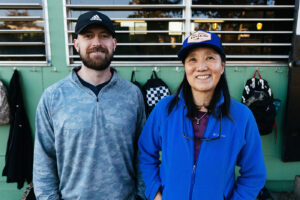 an after-school program for mainly 6
an after-school program for mainly 6 provide tailored services for the needs of their communities
provide tailored services for the needs of their communities 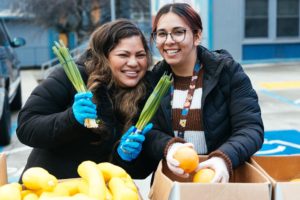 garden sits at the top of the stairs.
garden sits at the top of the stairs.  community – but that’s not all.
community – but that’s not all. Kiani, a life coach at the Phoenix Project and a regular pantry volunteer, says that “a lot of the work I’ve been doing here with the youth is healing. How do we address the traumas that we’ve been through and how they’ve impacted us? How do we transform that into something more productive or conducive to your success?”
Kiani, a life coach at the Phoenix Project and a regular pantry volunteer, says that “a lot of the work I’ve been doing here with the youth is healing. How do we address the traumas that we’ve been through and how they’ve impacted us? How do we transform that into something more productive or conducive to your success?” “Hey Trav!” or “My friend!”
“Hey Trav!” or “My friend!” 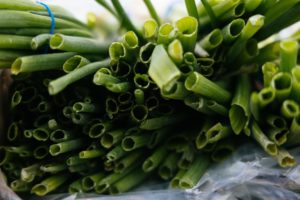 activist and advocate is something he never saw coming. With the trust of the community on one hand, and new connections to resources on the other, he’s the “perfect bridge.”
activist and advocate is something he never saw coming. With the trust of the community on one hand, and new connections to resources on the other, he’s the “perfect bridge.” 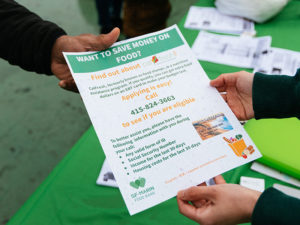 “I pick up groceries from the food pantry in the Canal (San Rafael) on Tuesdays, and the rest I buy with my food stamps. Last month, I received $211. Now, the letter from the county says I’ll receive $23, at most $29,” Gladys told us over the phone in Spanish. As a senior, grocery shopping is already made difficult by mobility issues: “My son will often go shopping for the both of us. I’m scared I’m going to fall.” Now, it will be doubly difficult without the emergency allotments she depended on previously.
“I pick up groceries from the food pantry in the Canal (San Rafael) on Tuesdays, and the rest I buy with my food stamps. Last month, I received $211. Now, the letter from the county says I’ll receive $23, at most $29,” Gladys told us over the phone in Spanish. As a senior, grocery shopping is already made difficult by mobility issues: “My son will often go shopping for the both of us. I’m scared I’m going to fall.” Now, it will be doubly difficult without the emergency allotments she depended on previously. 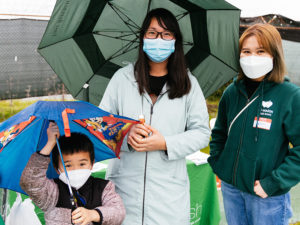 and Advocacy team continues to push at the federal level for benefits that better reflect the cost of living in our counties, and our CalFresh team continues assisting households in applying and securing the benefits they qualify for, we need our community members and local elected officials to rally in support of our neighbors facing food insecurity.
and Advocacy team continues to push at the federal level for benefits that better reflect the cost of living in our counties, and our CalFresh team continues assisting households in applying and securing the benefits they qualify for, we need our community members and local elected officials to rally in support of our neighbors facing food insecurity. 
 In sociology, there’s something called a “third place,” that describes a social environment outside of work or home where folks can congregate, see familiar faces, and build community. For María, the Friday food pantry in the Mission where she’s volunteered and picked up groceries for the past 10 years is a little of all the above.
In sociology, there’s something called a “third place,” that describes a social environment outside of work or home where folks can congregate, see familiar faces, and build community. For María, the Friday food pantry in the Mission where she’s volunteered and picked up groceries for the past 10 years is a little of all the above.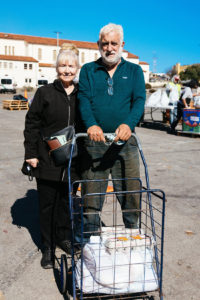
 Sharing Space, Creating Memories
Sharing Space, Creating Memories  CROps is an effort to provide more culturally responsive foods and more choice for our Black and Latinx participants, By supplying culturally relevant items people like and know how to use in the kitchen, this pilot hopes to increase satisfaction with the food choices offered,
CROps is an effort to provide more culturally responsive foods and more choice for our Black and Latinx participants, By supplying culturally relevant items people like and know how to use in the kitchen, this pilot hopes to increase satisfaction with the food choices offered, 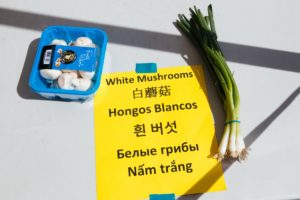
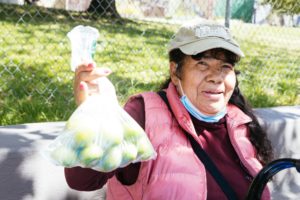 We also caught up with Maria at Cesar Chavez Pop-up Pantry, who is recovering from an operation on her stomach to remove a tumor: “I can’t eat out – my stomach is really fragile from the operation. Street food makes me sick. So, I need to cook at home, for my health.” New food and spice choices, like tomatillos and oregano, allow Maria to make comforting foods that aid her recovery.
We also caught up with Maria at Cesar Chavez Pop-up Pantry, who is recovering from an operation on her stomach to remove a tumor: “I can’t eat out – my stomach is really fragile from the operation. Street food makes me sick. So, I need to cook at home, for my health.” New food and spice choices, like tomatillos and oregano, allow Maria to make comforting foods that aid her recovery. 
 L
L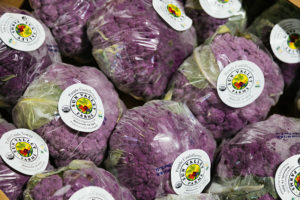 delivering more than nutrition to their parish. SFAAFBC’s holistic approach allows them to target the root causes of food insecurity by caring for the whole person.
delivering more than nutrition to their parish. SFAAFBC’s holistic approach allows them to target the root causes of food insecurity by caring for the whole person.
Share